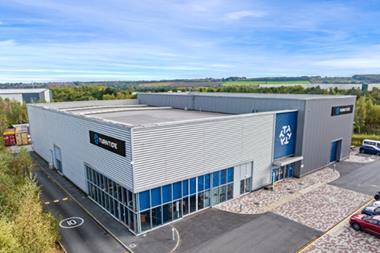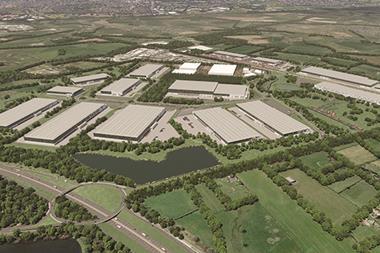Today, industrial and logistics (I&L) spaces are rapidly evolving as new supply networks are increasingly being established at a local level.

The pandemic catalysed a boom in online sales, with volumes up by 24.4% compared with online sales pre-February 2020. The I&L sector remains resilient post-pandemic, with take-up of industrial space predicted to reach more than 40m sq ft by the end of 2022.
Although the I&L sector is continually growing, industrial land has decreased by 24% – equivalent to 840 football pitches – in the past 20 years in London. The growth in demand for last-mile logistics is positioning the conversation around the need for spaces in the urban environment.
The reimagining of industrial spaces in urban areas is being firmly driven by environmental factors. Consumers are increasingly environmentally aware; government policies are placing more emphasis on sustainability, and corporations are beginning to recognise the need to future-proof often complex global supply systems that are being affected both by transportation costs and emissions targets.
But the perception of an industrial space needs to adjust, allowing residents and industry to co-locate harmoniously in urban areas. While industrial spaces were once predominantly focused on manufacturing, today’s industrial units are used for storage and office space and are predominantly logistical in nature.
We need to take a holistic overview of buildings, taking into account how they can be adapted for modern needs. For example, urban industrial spaces are being turned into attractive and comfortable workspaces, with breakout areas and features such as living walls and bike shelters with green roofs, providing wellbeing benefits to the occupants.
In London, regulation is driving change and has led to an increase in demand for urban I&L space. The Ultra Low Emission Zone (ULEZ) and Congestion Charge are just two policies affecting companies that deliver to customers in the city. Such policies could eventually become nationwide as the government attempts to meet its carbon-reduction targets.
In north London, an industrial unit in the middle of a residential area was reimagined for a national grocery company to enable it to carry out last-mile deliveries. The building was in a dilapidated state, so Pexhurst replaced the roof and all the glazing to improve its thermal properties. A great deal of resurfacing work was also carried out, which included installing new underground ducts for additional cables for the company’s fleet of electric delivery vehicles.
There are many benefits to such an approach. Companies operating supply chain networks at a more regional level are less likely to be affected by future changes to environmental-related policy or regulation. They will also be meeting the need for greener products, reducing their own environmental impact and lowering their transport costs. Reimagining urban I&L spaces provides a win for the consumer, the business and the environment.
Lee Stuart is director at Pexhurst





























No comments yet